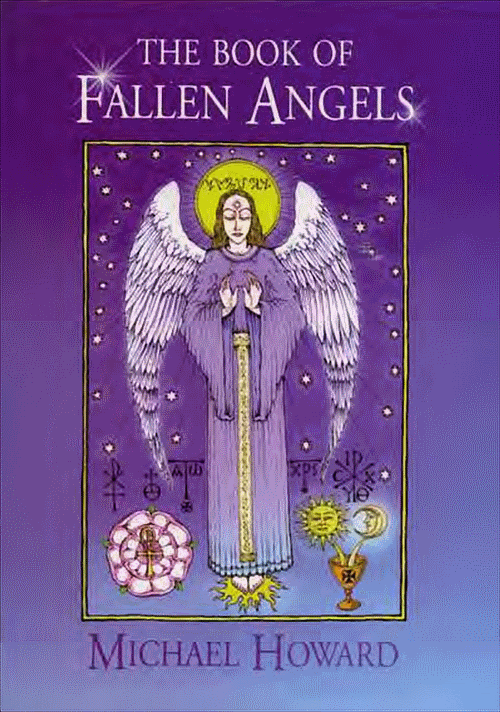 Michael Howard describes this book as both a sequel and a prequel to The Pillars of Tubal Cain, which he wrote with Nigel Jackson. While that book was a broad consideration of Luciferian themes that ranged from Gnosticism to Freemasonry, from Arthurian lore to traditional witchcraft, amongst others, this volume takes a more concise and specific look at the fallen angels of that tradition. In the 1960s, Howard was the student of Madeline Montalban, whose idiosyncratic and Luciferian magickal system differed from that offered at the time by both ceremonial magic and Gardnerian witchcraft. While this book is by no means a strict guide to Montalban’s system, it is clearly informed by her work, and by the course material of her Order of the Morning Star. Howard is also at pains to point out that although he is an empowered initiate of the Cultus Sabbati, and despite some of the similar themes, the material in this book does not necessarily reflect the teachings of that group.
Michael Howard describes this book as both a sequel and a prequel to The Pillars of Tubal Cain, which he wrote with Nigel Jackson. While that book was a broad consideration of Luciferian themes that ranged from Gnosticism to Freemasonry, from Arthurian lore to traditional witchcraft, amongst others, this volume takes a more concise and specific look at the fallen angels of that tradition. In the 1960s, Howard was the student of Madeline Montalban, whose idiosyncratic and Luciferian magickal system differed from that offered at the time by both ceremonial magic and Gardnerian witchcraft. While this book is by no means a strict guide to Montalban’s system, it is clearly informed by her work, and by the course material of her Order of the Morning Star. Howard is also at pains to point out that although he is an empowered initiate of the Cultus Sabbati, and despite some of the similar themes, the material in this book does not necessarily reflect the teachings of that group.
Montalban saw Lucifer as a benevolent being who, like the other fallen angels, had aided the development of humanity, and she referred to him with the inspired alternative name of Lumiel (Latin-Hebrew) or Lumial (Latin-Arabic), meaning ‘Light of God’. Interestingly, Andrew Chumbley received this same name independent of Montalban or Howard, and his Lovers Call to the Angel of Witchblood, addressed to Az’ra Lumial, is included in this book as an appendix.
Howard says that the key to Montalban’s success as a magician was her ability to synthesise Chaldean stellar lore, Egyptian mythology, medieval sorcery, Renaissance magic and Luciferian gnosis. And that is essentially Howard’s approach here too, covering the Fallen Angel and Cainanite mythos from a biblical and apocryphal perspective and then widening the scope by considering these sources in relation to Mesopotamian and other mythological systems, as well as European and Arabic folklore. Howard rarely reaches conclusions or states anything as definitive fact, simply presenting various bits of lore to create an overall picture. This includes the alternative archaeology of Graham Hancock and Andrew Collins, which again, is presented as contributing to the theme but is never entirely embraced; and probably a good thing too given the lack of scholarly rigour to be found in that field.
While not as bad as some of their other releases, this book features Capall Bann’s usual aversion to spell checking and proof reading. On page 47, Samael is, mayhaps, the victim of an unchecked autocorrect when the Cupertino effect turns him into a time-travelling Samuel, making a quote from the Zohar describe how “when Samuel mounted Eve he injected his filth into her.” Later, the angel Metatron is rendered as the somewhat weightier Metraton, and a reference is made to St Jreome. With mistakes like these, and others, being so glaring, it’s baffling that they were never picked up during even a cursory glance. And as is common with other Capall Bann titles, the book has gutters that are too shallow and a tight perfect binding, making it necessary to hold pages wide open to comfortably read them, forever at the risk of having the pages slam shut like some cheaply bound tome from the Unseen University.
Howard’s writing style is amiable and occasionally conversational, as he pulls together the threads of the fallen angel tapestry with a largely credible tone of voice. While these threads are far reaching and wide-ranging, there’s none of that Grantian-style of Boy’s Own anthropology, and his statements are usually reasonably sourced (though by no means exhaustively referenced); there are only a few moments that you go “hang on, that’s news to me, where does that come from?” (and because of that aforementioned tight binding, it’s hard to thumb back through and find the most egregious example). Thoroughly recommended for an overview of matters Luciferian and fallen angelical.
Published by Capall Bann. ISBN 186163236-3
